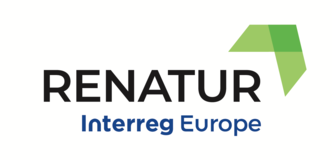The aim of RENATUR is to draw attention to the importance of peri-urban open spaces and their natural heritage in order to preserve it. Activities, which help us to achieve our aim, are the identification, analysis, dissemination and transfer of good practices and policy experiences into regional policy instruments. Activities are carried out in selected model regions, which have a great interest in the promotion and protection of the natural heritage of peri-urban open spaces in planning practice.
One of these model regions is Saxony-Anhalt, with the Ministry for Regional Development and Transport of Saxony-Anhalt as partner in the RENATUR project. An interregional workshop for Saxony-Anhalt was held on the 20.01.2021 online, to address the following challenges:
a) identification of suitable policy instruments and policy approaches, (e.g. planning instruments) to promote the revitalisation of inner-city brownfields to protect peri-urban open space; and
b) identification of strategies and approaches to establish a brownfield monitoring system at the federal state level. The monitoring system should serve to inform municipalities, potential investors and other potential users about the opportunities and obstacles of development of brownfields, such as availabilities, contamination levels, etc.
Programme for the 1-day workshop:
Introductory session 9.00 – 10.00 o’clock
- Introduction to the workshop and introduction of participants
- Brief presentation of the RENATUR project
- Presentation and discussion of the challenges of brownfield revitalisation, as a policy approach to protect peri-urban open spaces
Case study session 10:00 – 12:00 o’clock
- Introduction to the case study area (video)
- Presentation of the vision for the case study: brownfield revitalisation & monitoring as a tool for municipalities and investors
- Discussion of questions in two parallel breakout groups:
Group 1) “What are suitable policy instruments and policy approaches to promote the revitalisation of inner-city brownfields to protect peri-urban open space?”
Group 2) “How could a monitoring system for brownfields on federal state level, serving municipalities and investors look like? - Reporting back of small group discussions to plenary and synthesis of results
Peer review session 13:30 – 16:00 o’clock
- Introduction to the peer review process
- Detailed discussion by peers of the strengths/weaknesses and opportunities/threats of the most promising strategies and approaches for inner-city brownfield revitalization
- Detailed discussion by peers of the strengths/weaknesses and opportunities/threats of the most promising strategies and approaches for a brownfield monitoring system
- Discussion of ideas for recommendations to develop a brownfield monitoring system
- Outlook and tasks to develop the peer review report
Results and materials from the workshop are available here.

